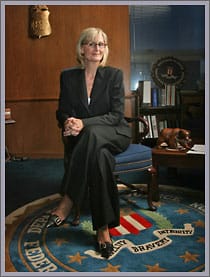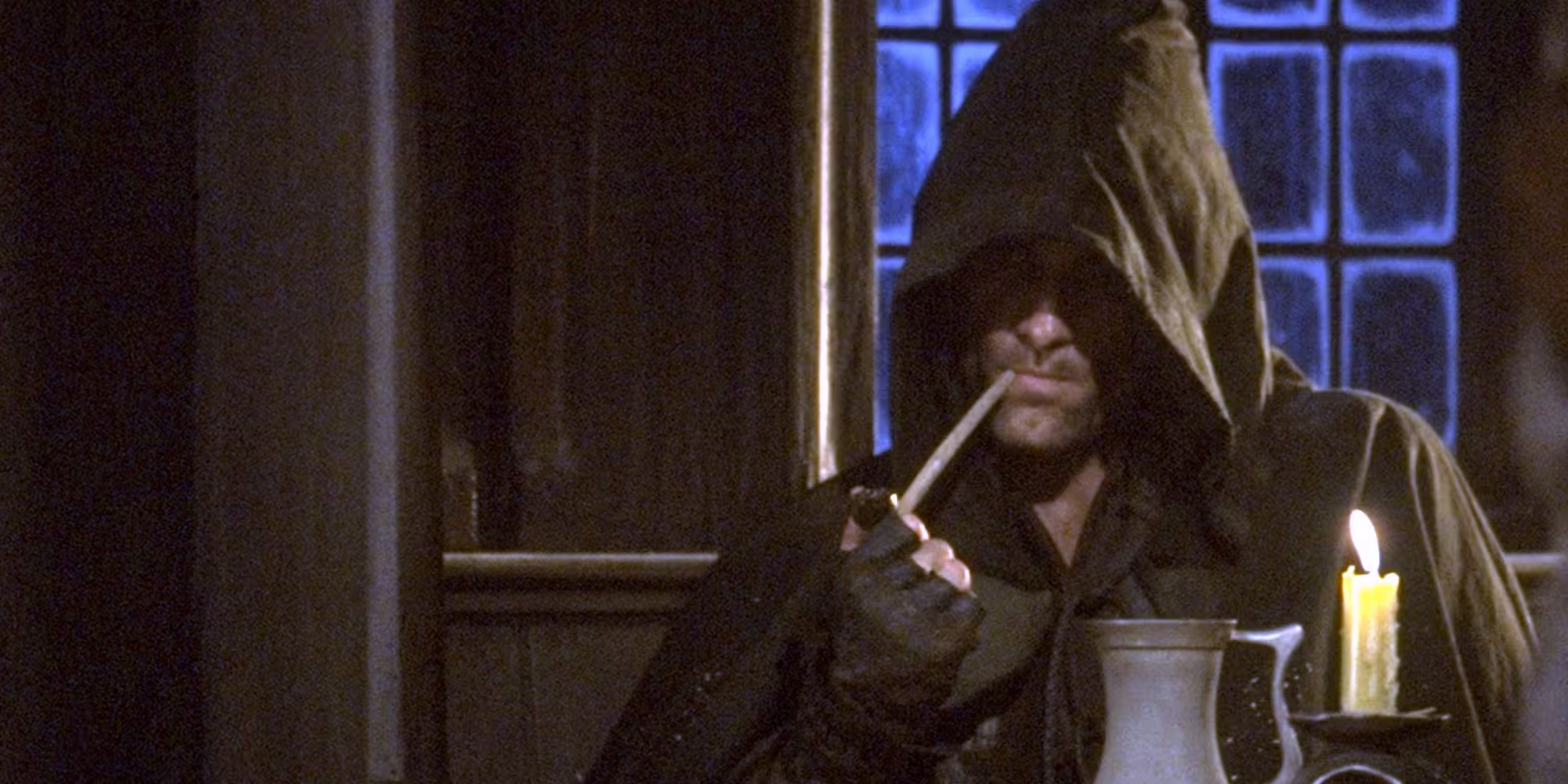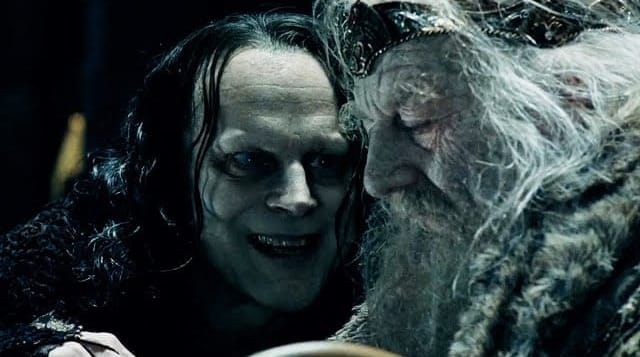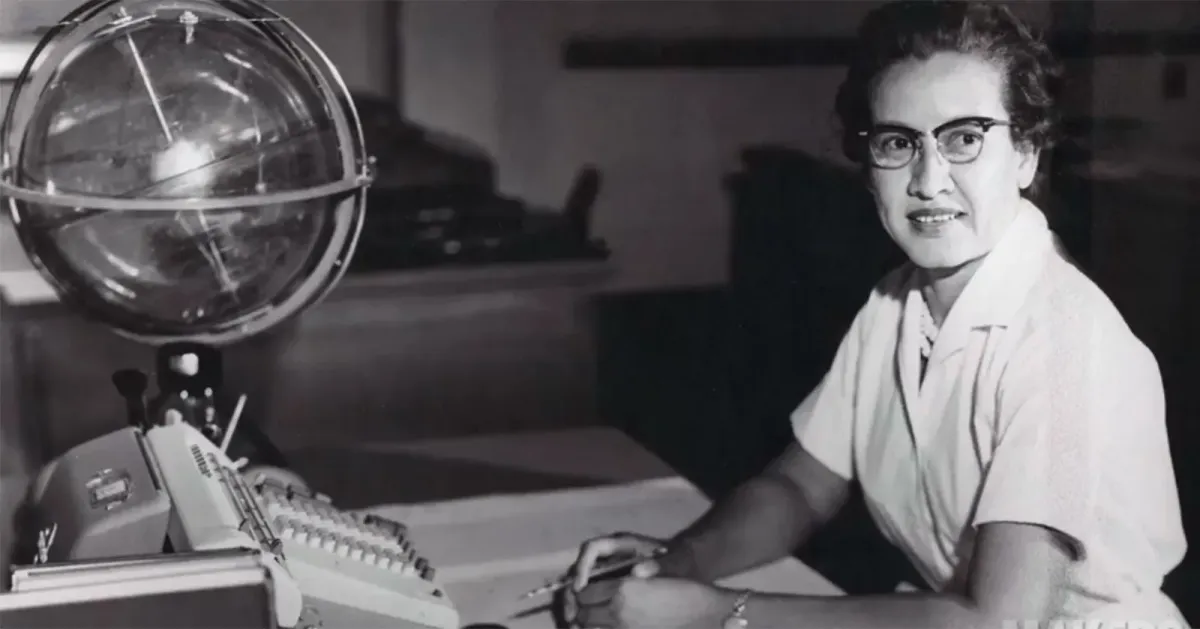Know Thyself, or Be Owned: Inner Strength, Espionage, and the Soul of the Space Economy
"I would have followed you, my brother... my captain... my king."
The life drains from Boromir's face as he utters these final words to Aragorn. Pierced by multiple arrows after momentarily succumbing to the Ring's temptation, his death scene in "The Fellowship of the Ring" stands as one of cinema's most powerful portrayals of redemption—and warning.

What destroyed the noble warrior of Gondor wasn't lack of courage or skill. It was an unhealed wound—a lifetime of conditional love from his father, of never feeling enough. The Ring simply found the fracture that was already there and widened it until the man broke entirely.
Beside him kneels Aragorn—equally skilled in battle but psychologically and spiritually whole. A man who spent decades in the wilderness confronting his fears, his heritage, his potential for failure. A man who knows exactly who he is.
One fell. One remained standing.
This isn't merely fiction—it's the perfect metaphor for what we're seeing in the new space economy. Not all wars are fought with missiles; some are fought with memories. As commercial players now control critical infrastructure once exclusive to nation-states, the rules have changed. What's coming isn't just market risk — it's psychological warfare.
The reality savvy space investors must recognize: in the Space 3.0 era, where state-sponsored espionage targets critical IP, a founder's psychological resilience creates measurable risk reduction. Companies led by emotionally regulated, self-aware leaders consistently demonstrate superior threat management and decision-making under pressure. Technical brilliance without psychological integration isn't just a personal limitation—it's a quantifiable vulnerability affecting investment security and returns.
The Psyche as Surface Area: Why Your Weak Points Are Attack Vectors
Let's dispense with pleasantries. Espionage isn't confined to spy thrillers or historical footnotes about the Cold War. It's real, ongoing, and heavily targeting allied space startups with unprecedented sophistication.
Modern espionage has evolved far beyond stealing blueprints from filing cabinets or the psychic intelligence efforts of Cold War-era programs like Project Stargate, and methods like Coordinate Remote Viewing, developed by David Moorehouse. Today, it exploits deeper and far more wide-spread vulnerabilities: fractured identity, unaddressed loneliness, and wounded ego. These aren't merely personal psychological issues—they represent critical national security vulnerabilities that adversaries systematically target and exploit.
As investors, we consider this a fundamental fiduciary responsibility to our founders and partners. This isn't abstract theory—it's why Space Cowboy Fund invests directly in psychological training, executive support, and comprehensive security frameworks for our portfolio companies. We ensure our founders are emotionally regulated, spiritually grounded, and operationally secure, protecting both their intellectual property and their teams from exploitation.
The CIA's own internal reports repeatedly show that traitors and turned assets often fall not from ideological conviction—but from inner wounds: thwarted ambition, festering resentment, and emotional instability. Robert Hanssen, Aldrich Ames, Ana Montes—their technical expertise was impeccable, but their psychological foundations were compromised.
Every unhealed trauma is a zero-day vulnerability in your brain — an unseen flaw in the system that an adversary can exploit. Just like a hacker finds a weakness in your software, foreign actors look for unresolved pain points in your psyche. These traumas are waiting to be exploited by someone who promises to make the pain stop. Like the Ring whispering to Boromir, offering the validation he desperately craved, these vulnerabilities speak louder than reason when triggered.
The Intelligence Community Knows This—and Trains for It
While space companies focus on materials engineering and propulsion efficiency, intelligence agencies worldwide have been perfecting human engineering for decades.
Former CIA officer Amaryllis Fox has spoken openly about how agents are taught meditation and self-awareness practices to preserve their core identity amidst layers of cover stories and personas. The goal isn't mystical enlightenment—it's operational security. You can't be broken if you know who you are.
FBI veteran LaRae Quy, who served as an undercover agent for 24 years, puts it more bluntly: "Self-awareness is tactical armor. You can't be manipulated if you understand your own emotions." She developed techniques to recognize when her emotions were being targeted by hostile actors—because they always are. During her career, she leveraged these techniques to uncover foreign spies on US soil, and turned them to collect for the US government. Following her retirement from public service, she founded the "Mental Toughness Center," where she teaches these skills to the public.

Robin Dreeke, former head of the FBI's Behavioral Analysis Program, built his career on understanding human behavior. His assessment? Psychological stability prevents you from getting hijacked by your own nervous system when under duress or manipulation.
CIA's analytical conclusion is straightforward: the mentally whole are simply harder to turn. This isn't philosophy—it's practicality.
Parallel Lessons from Modern Therapy
While intelligence agencies developed their psychological resilience techniques largely in secret, the therapeutic community has been reaching similar conclusions through clinical practice.
Internal Family Systems (IFS), a results-driven therapeutic method embraced by trauma specialists, offers a framework that would be immediately recognizable to any counterintelligence officer. It posits that psychological fragmentation—having parts of yourself at war with each other—creates exploitable vulnerabilities.
What therapists call the "Inner Child" isn't New Age fluff. It's the unhealed you. The part left behind in a moment of fear, shame, or grief. The part that still reacts primitively when triggered by similar circumstances—even decades later.
IFS, Schema Therapy, and trauma-informed modalities all converge on one fact: healing the inner child produces stable adults. Adults who make decisions based on present reality rather than past wounds. Adults who can't be manipulated through their pain points because those points have been integrated rather than dissociated.
Dr. Bessel van der Kolk, one of the world's foremost trauma researchers, has documented how healing trauma literally changes the nervous system, increases resilience, and prevents emotional re-enactment. In "The Body Keeps the Score," he demonstrates that trauma isn't just psychological—it's physiological. And physiological reactions bypass conscious control unless specifically trained.
The data backs this up. An IFS pilot study showed that 92% of participants no longer met PTSD criteria after treatment. This isn't marginal improvement—it's transformative change in psychological vulnerability.
Private Meditations, Global Impact: How a Roman Emperor's Journal Anticipated Modern Resilience Training
Long before modern psychology or intelligence tradecraft, the Stoics understood psychological vulnerability as a strategic liability.
Marcus Aurelius wrote of the "inner citadel"—the unbreakable fortress of self that withstands external chaos. "You have power over your mind—not outside events. Realize this, and you will find strength." This wasn't philosophical musing; it was battlefield preparation from a wartime emperor.

Stoicism is effectively the cognitive reframing therapy of the Roman Empire—teaching resilient thinking, emotional mastery, and detachment from impulse. It's no accident that modern military and intelligence communities still study these ancient texts. They work.
The daily practices recommended by Stoics—reflection, journaling, negative visualization—aren't merely philosophical exercises. They're psychological security hardening protocols. They train the mind to recognize manipulation, maintain focus under duress, and avoid emotional hijacking.
For space entrepreneurs facing both market uncertainty and foreign intelligence threats, these practices aren't optional—they're essential. The daily discipline of Stoic practice builds the very psychological infrastructure that prevents exploitation.
Becoming the Warrior-Painter: The Path to Integration
Let us ask - how was Aragorn introduced in "The Fellowship"? Not as a king, but as a weather-worn ranger called Strider—who also happened to be carrying the broken sword of his ancestors and could recite elvish poetry. A warrior-painter.

This archetype—the integrated human who can both fight when necessary and create when possible—isn't just powerful storytelling. It's the blueprint for psychological resilience in high-stakes environments.
To succeed in Space 3.0, founders must cultivate this same integration. Technical brilliance alone creates Boromirs—capable but vulnerable. The path forward is clear:
- Face Your Inner Council: Through practices like IFS or similar therapeutic frameworks, identify the fragmented parts of yourself that react from old wounds rather than present reality. These are your vulnerability points.
- Establish Daily Reflection: Like the Stoics prescribed, create space each day to examine your reactions, fears, and desires. What triggered you? Why? Where does that response come from? Is it serving your mission?
- Train Physiological Regulation: Under stress, your body will hijack your mind unless trained otherwise. Breathing techniques, meditation, and progressive exposure to controlled stress (as used in intelligence training) build the biological infrastructure of resilience.
- Cultivate Meaningful Bonds: Loneliness is an attack vector. Close relationships with people who see you clearly—both strengths and weaknesses—provide external regulation when internal systems fail.
- Recite Your Core Narrative: Know your story—where you've been, what you've overcome, what you stand for. Like Aragorn carrying the broken sword, your history becomes strength when integrated, not when denied.
This is the essence of the Space Cowboy ethos—not reckless adventurers, but integrated pioneers who combine technical capability with psychological wholeness. The cowboy rides into unknown territory not out of recklessness but out of a deep inner knowing that they can handle whatever comes.
Archetypes in Practice: Lessons from Middle-Earth
To make these concepts concrete, consider three archetypes from Tolkien that perfectly illustrate the spectrum of psychological integration in high-stakes environments.
Aragorn vs. Boromir: The Integrated and the Fragmented
Aragorn: the warrior-painter. He protects, builds, and sees clearly because he knows himself—his strengths, weaknesses, heritage, and limitations. He faced his fears in the wilderness for decades before stepping into leadership. The Ring has minimal power over him because there's no fragmentation to exploit.
Boromir: brave, skilled, and accomplished—but fractured inside. Longing for recognition, carrying the weight of his father's conditional love, vulnerable to flattery and the promise of power. The Ring knows exactly which psychological buttons to push.
Tolkien's genius wasn't just literary; it was psychological. The Ring doesn't tempt the pure; it feeds on the unhealed. It whispers to the parts of you that still hurt, still feel inadequate, still need validation.
In startups, Boromirs take the venture check from a hostile front company because it soothes their desperate need for validation. Aragorns vet the cap table like a counterintelligence officer because they're clear-eyed about both themselves and others.

Éowyn: The Journey to Integration
While Aragorn begins our story already integrated and Boromir falls to his fragmentation, Éowyn offers a different and perhaps more relatable path—the journey toward integration itself.
Initially, we find her trapped between societal constraints and her authentic nature, creating internal division that manifests as desperation and death-seeking. Unlike Boromir, whose wounds make him susceptible to corruption, Éowyn's internal conflict initially makes her vulnerable to despair.
Her transformation comes through directly confronting what she fears most. When she faces the Witch-king—a being no man could kill—her declaration "I am no man" represents more than clever wordplay against a prophecy. It marks the moment of complete psychological integration, where her external actions align perfectly with her internal truth.
"I am no man" means she recognizes herself outside the limiting structures that defined "man" in her society. She claims her unique identity and agency, enabling her to accomplish what others could not. She succeeds not despite being different, but precisely because she embraces her difference.
For founders navigating the space economy, Éowyn's journey offers a critical insight: psychological integration isn't necessarily something you possess from the beginning. It can be developed through confronting your limitations, fears, and the constraining narratives you've inherited—whether from family, culture, or industry expectations.
The question isn't just whether you're an Aragorn or a Boromir, but whether you're willing to undertake Éowyn's journey when facing your own Witch-king moments.
Real Threats: Why This Isn't Philosophy, It's Strategy
This framework isn't theoretical; it addresses immediate threats to the space economy.
China and Russia are actively targeting commercial aerospace companies through multiple vectors: cultivating infiltrators, orchestrating IP theft, offering seemingly innocent partnership opportunities, and providing coercive funding through complex front organizations. This isn't theoretical—within our own network, we maintain a sobering and growing list of verified incidents: facility break-ins, physical intimidation of personnel, and even targeted romantic manipulation of key staff members.
I speak from direct experience. What began as troubling patterns—operatives appearing with calculated frequency, orchestrated legal entrapments, and escalating physical intimidation—culminated in the deliberate sabotage of space hardware under my supervision. These weren't paranoid imaginings but documented incidents that ultimately required federal investigation, confirming they followed established intelligence tradecraft methods.
The psychological impact drove me into dark places, forcing a confrontation with my inner landscape. Only by examining my vulnerabilities and wounds could I emerge stronger. This journey through the psychological wilderness ignited my commitment to mentor other space entrepreneurs facing similar challenges. This path of integration isn't optional—it's survival, and it is a lifeling journey.
The vulnerabilities they target include: founders with unaddressed trauma who can be manipulated through their pain points, engineers with untreated addictions who need money, and lonely staffers who just want to be heard and appreciated.
Consider the scene where Wormtongue whispers poison into King Théoden's ear in "The Two Towers." This is precisely how psychological compromise works in real intelligence operations—someone who knows your weak points feeding you narratives designed to lead you toward decisions that serve their interests, not yours.

This isn't speculation. DARPA, the Defense Innovation Unit (DIU), and AFWERX have begun screening deeply for psychological readiness and signs of manipulation risk. They've seen too many promising technologies compromised not through technical means, but through human frailty.
Psychological wholeness isn't some soft, optional quality. It's survivability. In startups, in war, and in the vast expanse of space.
Investor Advisory: What This Means for You
For investors in the space economy, this shift in understanding requires a parallel shift in due diligence.
Vetting the technology is necessary but insufficient. You must also vet the team's emotional health and leadership clarity. A brilliant propulsion system designed by a founder with unresolved abandonment issues is a compromised asset waiting to happen.
Psychological stability reduces concrete business risks: insider threat, sabotage, hostile takeover, and poor decision-making under pressure. It's not just about preventing catastrophic failure—it's about enabling peak performance when it matters most.
The best founders in space are warrior-painters—resilient in crisis, self-reflective in calm, and grounded regardless of circumstances. They can handle both the technical complexity of orbital mechanics and the psychological complexity of human motivations.
As an investor, you should be asking: Has this founder done the inner work necessary to withstand not just market pressures, but psychological warfare? Have they faced their Boromir tendencies and developed their Aragorn capabilities?
The Warrior-Painter: Why Space Cowboys Win
The name "Space Cowboy" isn't accidental. It embodies the integrated archetype we believe will define success in the new space economy.

The first writer-turned-coder of the computing era, Ada Lovelace exemplified the warrior-painter archetype through her remarkable integration of seemingly opposite domains. Daughter of the romantic poet Lord Byron, she channeled her inherited creativity through the lens of mathematical precision. While collaborating with Charles Babbage on his Analytical Engine, she wrote history's first algorithm and envisioned machines that could manipulate symbols beyond mere calculation—machines that might someday create music and art. This pioneering insight essentially conceptualized the translation of human creative expression into machine language over a century before today's AI generative systems.
Her revolutionary ideas faced significant skepticism, requiring the stoic resilience she demonstrated while navigating the substantial constraints placed on women in 19th century scientific circles. Lovelace's groundbreaking contributions emerged precisely because she operated at the intersection of rigorous analysis and poetic imagination—the psychological integration that continues to characterize breakthrough innovation in every era, especially in space technology.
This archetype transcends all labels—it's a mindset and approach available to all founders, regardless of creed, race, ideology, beliefs, or economic upbringing. History and fiction are filled with examples: Aragorn's quiet strength, Éowyn's determined courage despite cultural constraints, Ada Lovelace's mathematical brilliance combined with poetic sensibility.

Consider Katherine Johnson, whose extraordinary mathematical abilities at NASA came with an equally remarkable psychological fortitude. In the segregated environment of 1950s and 60s America, Johnson faced dual barriers of racism and sexism, yet maintained her focus and excellence. She rose above it by her inner-work, intellect, and merit. When John Glenn was preparing for his historic orbital flight in 1962—a mission with life-or-death stakes for both the astronaut and America's position in the Space Race—he specifically requested that Johnson verify the computer's calculations by hand: "If she says they're good, then I'm ready to go." This wasn't merely technical respect; it was recognition of her unshakeable inner citadel. Johnson's psychological integration allowed her to separate the external barriers from her internal worth, creating space for her brilliance to flourish despite immense societal pressure. If her calculations had been wrong, Glenn would have paid with his life, and the fledgling American space program—already trailing behind Soviet achievements—might have collapsed entirely.
The Space Cowboy represents resilience, decisive action, and calculated teamwork—combining independent strength with the wisdom to collaborate as the mission demands it. This figure thrives in harsh conditions and makes quick decisions under pressure, while remaining deeply reflective, often contemplating under vast skies, coming to terms with both external challenges and internal complexities.
The Space Cowboy is who we invest in.
Like Aragorn accepting both his heritage as king and his decades in the wilderness, the Space Cowboy integrates seeming opposites: technical precision with creative intuition, decisive action with thoughtful strategy, commercial drive with mission integrity.
This integration isn't just branding—it's a strategic advantage. Companies led by psychologically integrated founders consistently demonstrate better decision-making under pressure, greater team cohesion, and higher resistance to both market volatility and hostile influence operations.
The warrior knows how to fight. The painter knows how to see. The Space Cowboy knows how to do both—and that's who will build the sustainable infrastructure of Space 3.0.
Conclusion: The New Due Diligence
The space economy won't be won by the biggest check or the most impressive technology—it will be won by the most integrated people. Success requires a three-pronged foundation: leaders with psychological fortitude, technical brilliance, and crucially, sound business models that ensure long-term viability. Consider the cautionary tale of numerous $100M space ventures now abandoned across the new space market landscape—technically impressive rocket startups and missions that ultimately failed because they couldn't balance innovation, integrated psyche in their leadership, and financial sustainability.
The most successful space founders resemble Aragorn at the Council of Elrond, or Éowyn on her journey to integration—they possess unwavering self-awareness and conviction while others around them succumb to division and distraction. They understand that true leadership in this frontier comes from harmonizing engineering excellence, inner strength, and robust financial planning.

Founders must be trained like operatives, because they're fighting the same war. The battlefield has simply shifted from government agencies to commercial entities that now control strategic high ground.
You don't need to be perfect. You don't need to have already completed your psychological integration. None of us are completed works. But you do need to be on the path—actively working to know yourself better than your enemies do. Better than those who would use your own wounds against you, your company, and ultimately, your country.
The ancient maxim inscribed at Delphi—"Know thyself"—wasn't spiritual guidance. It was tactical advice.
At Space Cowboy Fund, we don't just invest in companies. We invest in conviction. In founders committed to becoming warrior-painters. Because in Space 3.0, that's who survives. That's who builds. And ultimately, that's who wins.
Appendix: Resources for Psychological Integration
- For Founders and Teams:
- "The Body Keeps the Score" by Bessel van der Kolk
- "No Bad Parts" by Richard Schwartz (Internal Family Systems)
- "Meditations" by Marcus Aurelius
- "Emotional Intelligence for the Modern Leader" by Christopher D. Connors
- For Investors:
- "Spy the Lie" by Philip Houston, Michael Floyd, and Susan Carnicero
- "Counterintelligence Awareness and Security Brief" (unclassified version available through DCSA)
- "The Psychology of Risk" by Ari Kiev
Interested in building resilient, conviction-driven teams for the new space frontier? Connect with Space Cowboy Fund to learn more about our approach to investing in the psychological infrastructure of the space economy.


